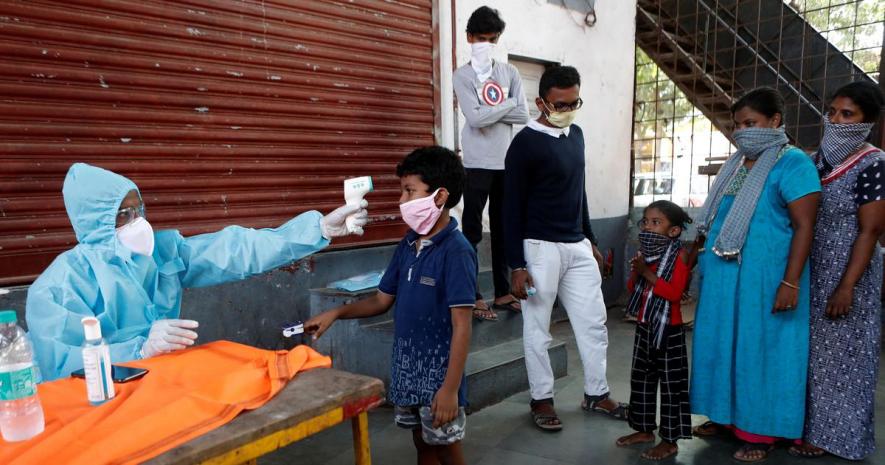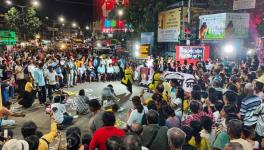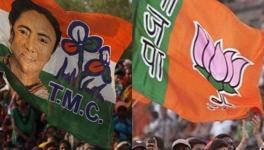Denial, Muscularity Cannot be Basis of India’s Covid Policy

Image Courtesy: Reuters
Over the weekend, something significant must have happened in Bengal. On Monday, 20 July, the government admitted that “some specific community transmissions” must be going on. To our knowledge, this was the first official recognition of community transmission in the country at a time when the total caseload stands at around 1.21 million and fatalities have topped 29,500.
Before getting into the larger argument about how the regime at the Centre has dealt with the pandemic, a word on Bengal’s response would be useful because it is indicative of the generally ad hoc, unfocussed and knee-jerk way in which pandemic responses have been formulated. Thus, having identified “some specific community transmissions”, the Bengal government passed an order mandating two days of lockdown every week.
What on earth does the government think that will end up achieving? The answer came from Alapan Bandyopadhyay, the home secretary to the state government, now tasked with leading the response to the pandemic. “There will be a complete halt in the manner of a complete lockdown,” he said, explaining that “sudden breaks in the form of bi-weekly lockdowns” would yield results. A more plausible explanation has also been put out by a doctor on a high-level panel, who says that over the past few weeks, people seem to have completely unlearned some basic discipline in public behaviour. The biweekly lockdowns could help restore it.
This is not meant to be specifically critical of the Bengal government because the pandemic response has been shambolic throughout the country. We can, in fact, congratulate it for having taken cognisance of the elephant in the parlour, however belatedly.
It was reported on 20 July in The Telegraph that in early April the Union health ministry blocked the public disclosure of the names of 36 districts in which researchers had found evidence of community transmission. Early April, one presumes, means about a fortnight into the lockdown. According to the report, experts have said, 16 of those have emerged as areas hardest hit by the pandemic, including Chennai, Kolkata, Delhi and Mumbai.
After some resistance, the researchers were allowed to publish their findings in the Indian Journal of Medical Research on 9 April, without mentioning the names of the districts. The district authorities were apparently alerted about the findings and asked to take strict containment measures.
This report highlights several characteristics of the Modi regime’s response to the pandemic, most of which would be disparaged and discouraged by agencies like the World Health Organization (WHO). First, there is a lack of proper messaging. Far from keeping the public supplied with credible information, it is being kept in the dark. It is precisely this kind of state action that has encouraged rumour, hearsay and fuelled unhelpful behaviour on the part of the public. Why indeed should citizens heed the government’s exhortations when they have no clarity about the nature and dimensions of the problem?
Second, there is the obvious resort to dangerous denial. That community transmission is happening is obvious. We would not have seen the kind of spread or the kind of numbers we are seeing had this kind of transmission not being happening. Acknowledging the fact should have been the basis—beginning around three months ago—of a completely different regime to deal with the pandemic. Yet, the Union health ministry iterated on Tuesday that it sees no evidence of community transmission.
Thus, perhaps, we should have been testing, tracing and isolating by a factor of many times higher than we were doing from mid-April. Or, at least to full capacity, whilst rapidly increasing that capacity. Instead, we had a complacent, self-satisfied leadership that kept patting itself on the back. India, it kept saying, was doing so much better than the advanced world.
Worse still were the serial obfuscations of the meaningless daily briefings at which the designated health ministry official kept trying to lead the public up the garden path. The constant emphasis on the lengthening of the “doubling time” is a case in point. As if even schoolchildren could not figure out that it would take longer to double from 10,000 than it had taken from 10.
Then, as has been evident all along, was the absolute refusal to allow freedom at local levels. Unrealistic parameters were set, which did not allow state and local authorities to take decisions in accordance with circumstances. The pandemic response should ideally have been bottom upwards, with the central government looking after issues of interstate coordination and providing financial, technical and logistical support. This, of course, would have included making sure that migrant workers and others stuck away from home got back to their homes before the lockdown, or, at the very least, soon after. Failure to do that, stemming from an overblown and arrogant style of governance was the original sin.
One of the major failings in the country’s pandemic response caused by the top-down approach that was favoured has been seen especially in two areas: testing and contact tracing. It is entirely possible that had states been given more leeway in running testing logistics, better results could have been obtained. A centrally leashed system hasn’t really served us all that well, if we remember the initial missteps of the Indian Council for Medical Research. On the other side, the failure of the central authorities to provide a prompt lead on contact tracing, including logistical help, has proved costly. You could argue that this has been the result of the centre’s refusal to accept that community transmission has been a reality for months.
Experts of every stripe have pointed out from the beginning that the lockdown is not in itself a solution to anything. It is a delaying tactic and its role is to buy health authorities the time needed to enhance preparedness in every possible area: from increasing testing capacity and putting in place a robust contact tracing infrastructure to enhancing treatment facilities from hospital beds, supplies and personnel. But the six-odd weeks the country was locked down was not utilized anywhere near maximally.
Thus, almost four months after the lockdown was declared at four hours’ notice, there is no evidence that it has helped in any way. Positive cases are mounting at a rate that is one of the fastest in the world. At the moment, the prospect of the curve ‘flattening’ out, doesn’t seem very high. India has been spared huge casualties because of its low fatality rate. But if the cases continue to mount, so will the fatalities.
Since the imposition of another lockdown of any substance can be safely ruled out, other ways must be found to first slow the transmission rate and limit the mounting cases and, second, look towards forcing the curve downwards. It doesn’t look like it’s going to happen in a hurry, but one thing is sure: not much is going to change in the immediate or short term unless the government first admits that community transmission is a reality.
The failure to do so is both inexplicable and dangerous. First, that community transmission would have started at some point was a foregone conclusion. It is not the government’s fault, so there should be no problem about admitting it instead of hiding behind arcane definitions. The dangerous part is that it shows up the central government as opaque and uncommunicative and unwilling to take the people into confidence. It also, incidentally, shows it up as indecisive, incompetent and a prisoner of its own prejudices.
But at this point the centre must finally dump denial, because only that will enable it to change tack and move towards a robust testing and tracing paradigm. The Modi regime seriously needs to shed its “muscular” approach to everything.
The author is a freelance journalist and researcher. The views are personal.
Get the latest reports & analysis with people's perspective on Protests, movements & deep analytical videos, discussions of the current affairs in your Telegram app. Subscribe to NewsClick's Telegram channel & get Real-Time updates on stories, as they get published on our website.
























